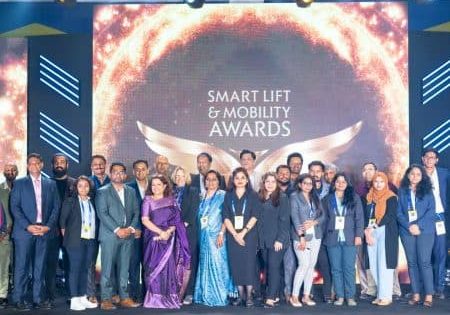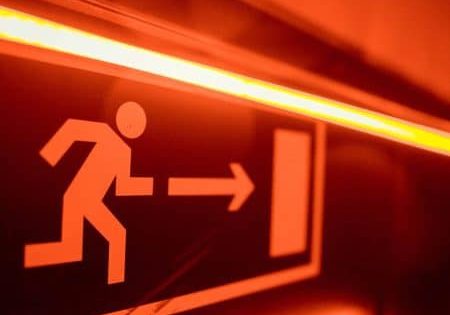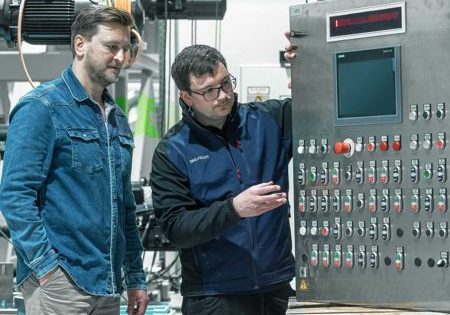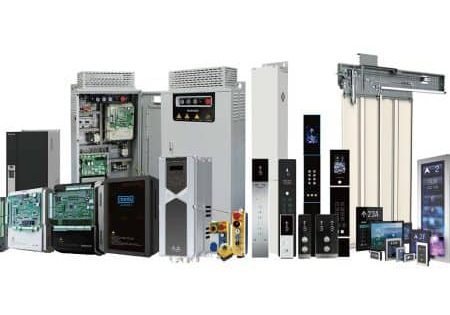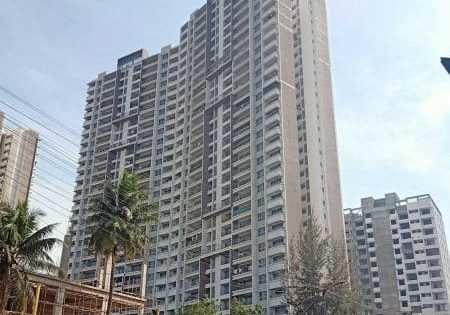Prerequisites for Testing, Inspection and Certification of Lifts Intended To Be Installed and Operated in India
Jun 1, 2024
A possible outlook
1. Abstract
The recent rapid growth of the construction industry in India has led to a growing demand for vertical-transportation (VT) systems throughout the country. New construction, along with the operation of more and more lifts and escalators, is leading to a greater need for well-trained specialists, regulations and standards so these transport systems are associated with as few accidents and injuries as possible.
In this context, the Bureau of Indian Standards (BIS) has developed two important Indian Standards (IS) largely based on the International Organization for Standardization (ISO) lift standards ISO 8100-1 and ISO 8100-2.
With some important adaptations for the Indian market, the standards were published on January 10, 2023, with a transition period until December 21, 2024,[1] as:
- IS 17900-1 Lifts for the Transport of Persons and Goods — Part 1: Safety Rules, and
- IS 17900-2 Lifts for the Transport of Persons and Goods — Part 2: Design Rules, Calculations, Examinations and Tests of Lift Components.
The resulting need for type testing and certification of safety components for lifts, described in Part 2, conflicts with the local lift components manufacturing and installer industry, some of which is not yet sufficiently prepared for this.
This article deals with the requirements that must be met before the standards can be fully and exclusively applied.
2. Introduction
Social expectations regarding safety in everyday life are different in various regions of the world but are continuously converging. This can also be seen in the further developed regulations and stricter legal requirements being introduced worldwide. These generally specify how the expectations for the required safety level are to be met. The decisive factor is usually a specific technical standard, as well as the specifications on how compliance with these standards is to be ensured, for example: at what point in time compliance must be checked, by which institutions, with what training and education, at what intervals and to what extent. In addition, it must also be clarified in which cases and under which conditions deviations from such a prescribed technical standard are permitted.
Maintaining a well-functioning safety concept, therefore, requires a legislative authority that creates a legal framework and a functioning market surveillance system.
It must be ensured that, firstly, safe lifts are installed, and secondly, that they are operated safely. For the former, developers, manufacturers, installation companies and approved/accredited Conformity Assessment Bodies (CABs) are the key stakeholders. For safe operation, it is the owners/operators, maintenance companies and approved third-party testing and inspection bodies for periodic inspections. The rules for the individual responsibilities of the various parties involved must be specified by the legislator.
This article will focus mainly on the usual requirements for manufacturers that produce standard-compliant components for installation in lifts and escalators in India, as well as the usual requirements for installers.
3. Situation in India
A lift consists of many individual parts. Some of these are commonly known as safety components. What these safety components have in common is that they are not necessarily required for simple transportation of passengers from one floor to another; this could be achieved without having them installed. What’s common to them is that all have the task of safeguarding against conditions that could lead to serious accidents.
Such safety components for lifts that shall be type tested and certified as per Indian standards are:
- Landing and car door locking devices
- Safety gears
- Overspeed governors
- Buffers
- PESSRAL, (SIL-rated circuits)
- Ascending car overspeed protection means
- Unintended car movement protection means
- Rupture valve/one-way restrictors
Furthermore, design calculations and verifications are foreseen for:
- Guide rails
- Evaluation of traction
- Evaluation of safety factor on suspension ropes
- Ram, cylinder, rigid pipes and fittings
- Calculations against over pressure
- Calculations of jacks against buckling
Practically, as described in the European Lifts Directive, or in certain ISO Technical Specifications, even the design of complete lifts can be certified as so called “model lifts.” Such a model lift represents a defined range of lifts whose technical compliance documentation shows how essential health and safety requirements will be met. This means that also a series-produced lift with certain characteristics (speed, load capacity, lifting height, etc.), which is designed and then inspected and tested as a representative specimen lift with all its permitted variations and configurations, can be certified. (Note: The assigned CAB can decide which variations and configurations need to be tested to certify the entire range of applications.)
This is useful to the extent that certain steps during the acceptance inspection of an installed lift of that series, such as calculations and fitting of safety components, as well as the acceptable installation dimensions, can be considered as already checked if such a model lift certificate is provided. For on-site testing after installation, only the conditions specified in the annex to this certificate and the function and effectiveness tests remain if the entire acceptance process is secured by a relevant legal framework.
Due to the importance of safety components installed in lifts and the expected guarantee that they will function reliably in an emergency, extensive and precise testing is necessary to achieve the requested, acceptable safety level and to be certified. However, such comprehensive tests and inspections are difficult or impossible to carry out during the acceptance test on an installed lift system on-site. For this reason, certain regulations in certain countries require these safety components to be tested in suitable and accredited laboratories using appropriate measurement technology.
Furthermore, if compliance with regulations and standards has been ascertained in such an approved laboratory, then accredited CABs may issue type examination certificates for the design of these safety components based on the reports issued in the approved laboratory. In certain ISO Standards or ISO Technical Specifications, these CABs are called Certification Bodies for Lifts (LCBs). Now, in the preparatory phase, when BIS decided to publish the two modern standards mentioned above (IS 17900-1 and IS 17900-2), it turned out that suitable laboratories and accredited LCBs are available internationally but not in India.
It is therefore planned to set up at least one national, local laboratory that meets the requirements and provides the necessary measurement technology. This laboratory must then also be accredited, i.e., fulfill the applicable requirements of ISO/IEC 17025.
However, the inspections and tests carried out in the accredited laboratory must be done either by the laboratory’s own sufficiently qualified and approved personnel or under the supervision of the qualified conformity assessment personnel of an LCB. In most cases, the tests can be performed at the manufacturer’s premises if the measurement equipment is calibrated, and all other accreditation requirements are observed. Based on the issued test report, a certificate with the necessary details can then be issued by the LCB.
4. Further Clarifications
Such certificates for lift safety components (but also for model lifts) can cover a certain range, e.g., for different speeds or different masses, etc., if conformity has been proven for corresponding and suitable specimens.
The ordered and then obtained type examination certificate remains the property of the issuing certification body, but the manufacturer that ordered it becomes the so-called “certificate holder” who can use it for proving compliance with a regulation or a standard, either to the authority or to an LCB for an acceptance inspection or to potential clients. The inspection basis on which the certificate was produced will be mentioned on the certificate.
The processes described have been used in developed, industrialized countries for many years. For some time now, these models have been adopted by more and more countries around the world.
Outside the U.S. (where American Society of Mechanical Engineers [ASME] codes are used), and Japan, (where the Japanese Industrial Standard [JIS] and Japanese Building Code is used), the certificates issued based on EN 81-20 and EN 81-50 are generally accepted.
Based on these two European standards, ISO 8100-1 and ISO 8100-2, have been published, and it is intended that, in the future, CEN (European Committee for Standardization) and ISO will work together on further development of these two standards. In the next publication, the differences to the ASME and JIS standards, currently summarized in a Part 3 (ISO 8100-3), will be gradually incorporated so these differences will eventually completely disappear.
BIS is a permanent member of the ISO/TC 178 (Technical Committee – Lifts, Escalators and Moving Walks), including WG 4, (Working Group 4: Safety Requirements and Risk Assessments) in which other standards in this ISO 8100-x series are also being developed. This puts BIS in a position to profitably introduce the latest developments in India.
The following ISO standards and technical specifications drafted by the TC 178/WG 4 should also be emphasized:
- ISO 8100-20
- ISO/TS 8100-21
- ISO/TS 8100-22 (planned to be published soon)
- ISO/TS 8100-23 (planned to be published soon)
They provide helpful information and guidance on conformity assessments and certification of lifts, lift components and functions. The process provided by this ISO 8100 series is particularly useful for establishing safety involving innovative design or new technologies.
5. Needs on the Indian Lift Market
There is a whole series of IS standards for lifts and escalators in India that have been in place for a long time. Furthermore, in 1938, there was the Bombay Lift Act, and then the Bombay Lift Rules of 1958, which have been revised from time to time. In some Indian states, there are separate ordinances and regulations pertaining to the safety of installation and operation of lifts and, accordingly, to existing IS standards.
Unfortunately, there is currently no comprehensive, sufficiently monitored regulation for the whole of India that sets out uniform rules to ensure the same level of safety. However, BIS has started to align to a new, modern international standardization with some minor adjustments for the Indian market.
The result is IS 17900-1 and IS 17900-2, both published in India on January 10, 2023, with a transition period until December 21, 2024. Part 1 of IS 17900 describes the requirements for the installation of lifts and can be used by manufacturers, installers, consultants and inspection bodies or LCBs. Part 2 of IS 17900 describes the design rules, calculations, examinations and tests of lift components, including safety components, type examinations and information on the content of the certificates.
Before a lift is put into operation in India, it must comply with the National Building Code of India and, therefore, soon also with the newly published IS 17900 standards.[2] However, qualified personnel belonging to an accredited LCB must be used for such comprehensive acceptance inspections. This is the most common international model, which has also proven to be the most reliable and goal oriented.
Therefore, one of the most urgent tasks will be the approval and provision of such specially qualified experts. For the time being, in urgent cases, these inspections and certifications can possibly be carried out by specialists licensed for the same task abroad if a declaration of recognition can be presented and issued by a competent authority in India. However, it remains to be seen how responsible authorities will decide on this to overcome the current lack of extensively qualified specialists.
For the certification of safety components dealt with in Part 2 of IS 17900, it is important to consider that, besides the laboratory and its measurement equipment, the personnel commissioned for the described tests must be qualified, experienced and approved.
Of course, this cannot happen overnight. It would require a start-up phase in which the first projects could be carried out by experienced LCB experts in the presence of local personnel to be trained. This includes for each safety component, separately, a certain number of projects where the local trainee only observes followed by some that are done under supervision. Only when the necessary expertise and skills have been proven is it advisable to continue and keep up the program with local personnel.
Similar training programs are a documented part of the auditing content of many international, accredited LCBs.
Furthermore, it is important to mention that a certification for the design of a model lift, lift safety component or function alone does not guarantee that the installed product is code compliant. The certificate presented by the manufacturer only states that a specimen, i.e., a sample, has been viewed, evaluated and found to be code compliant. So, only the design has been certified.
Therefore, production must also be checked, monitored and confirmed in a complete surveillance system; otherwise, modified products, which are no longer covered by the certificate because unauthorized changes have been made to them, could be installed on the Indian market. One method used in the European Lifts Directive, for example, is product control by means of so-called random sample tests from production. These are normally carried out annually by a trained, qualified Notified Body expert based on a contract that the certificate holder has with the respective Notified Body. (Note: A Notified Body is a CAB designated by an EU Member State (or by other countries under specific agreements) to assess the conformity of certain products before being placed on the market.)
When purchasing parts with a certified design, it is therefore always advisable to request the most recent confirmation/attestation report (or a so-called Certificate to Conformity to Type: “CCT”) of a product control from the production company.
Schematically, the processes could possibly look as follows:
6. Further Considerations
Generally, ISs are considered as guidance and therefore voluntary in nature. A few ISs are mandatory for the ISI mark, but until now, it is not decided how a general certification regulation would be for lift safety components and newly installed lifts based on the two new ISs.
However, some Indian states have included clauses in their respective lift regulations mandating compliance with the relevant latest ISs, or international standards, but without specifically mentioning IS 17900 Part 1 and Part 2. Amongst these states are, for example: Kerala, Tamil Nadu, Karnataka, Jharkhand, Haryana and Uttar Pradesh.
To ensure compliance with lift regulations and standards, as well as traceability, we recommend that lift safety components, functions and lifts that have received certification under Indian regulations be marked on a permanent, visible, legible and indelible label. Useful information about marking of lifts and safety components for lifts can be found in the ISO Technical Specification planned for publication soon: ISO/TS 8100-22 in Annex A.
How to proceed with modifications to an installed lift that has been certified according to a specific regulation and standard and was accordingly labeled should also be determined by the national authorities soon.
“Termination, reduction, suspension or withdrawal of certification” are topics that are defined in international standards for certification bodies. The applicability of these rules should also be mentioned in a regulation on certifications in India to prevent uncertainties in the market.
7. Summary
As can be seen from the preceding text, we can expect to see just as rapid an adaptation to international standardization and legislation on safety of VT systems in India as we are currently seeing in the construction industry and general development of the country.
A major and important step has already been taken with the recent publication of IS 17900-1 and IS 17900-2 by the BIS. However, “fine-tuning” is still necessary before implementation to ensure a smooth process. Some suggestions and important approaches have been dealt with in the text.
An all-India regulatory framework regarding the interaction of the various stakeholders, such as developers, installers, manufacturers, assemblers, owners, operators, maintenance companies and third-party inspection companies, who contribute to ensuring safety in the installation and use of these important facilities in our daily lives would be very instrumental.
Disclaimer: The content of this article reflects the personal views of the authors. The authors or the organizations employing them cannot be held responsible for any actions taken by anyone based on the information contained in this article.
References
[1] THE GAZETTE OF INDIA: EXTRAORDINARY [PART III—SEC.4] Bureau of India Standards Corrigendum New Delhi February 27, 2024: Ref No. HQ-PUB013/1/2020-PUB-BIS (482) dated December 23, 2022, (published on January 6, 2023)
[2] National Building Code of India Vol-2: Part 8: Building Services — Section 5: Installation of Lifts, Escalators and Moving Walks: 5A Lifts.
[3] National Building Code of India Vol-2: Part 8: Building Services — Section 5: Installation of Lifts, Escalators and Moving Walks: 5B Escalators.
[4] IS 17900-1 Lifts for the Transport of Persons and Goods — Part 1: Safety Rules
[5] IS 17900-2 Lifts for the Transport of Persons and Goods — Part 2: Design Rules, Calculations, Examinations and Tests of Lift Components
[6] DIRECTIVE 2014/33/EU OF THE EUROPEAN PARLIAMENT AND OF THE COUNCIL of February 26, 2014, on the harmonization of the laws of the Member States relating to lifts and safety components for lifts
[7] EN 81-20:2020 — Safety rules for the construction and installation of lifts — Lifts for the transport of persons and goods – Part 20: Passenger and goods passenger lifts.
[8] EN 81-50:2020 — Safety rules for the construction and installation of lifts — Examinations and tests — Part 50: Design rules, calculations, examinations and tests of lift components.
[9] ISO 8100-1:2019 Lifts for the transport of persons and goods. Part 1: Safety rules for the construction and installation of passenger and goods passenger lifts
[10] ISO 8100-2:2019 Lifts for the transport of persons and goods. Part 2: Design rules, calculations, examinations and tests of lift components
Siegfried Melzer is a graduated mechanical engineer from the University of Applied Studies in Munich, Germany. He is technical director at TÜV SÜD Industry Service GmbH at the Business Unit – Lifts, Cranes and Conveyors, having more than 32 years of experience in the field of VT, including national regulations and different international codes and standards. Having extensive international experience in different managerial positions, he is also a member of ISO/TC 178 (lifts, escalators and moving walks) representing DIN (German Institute for Standardization), a member of WG 4 safety requirements and risk assessments) and a member of WG 6 (lift installation). Furthermore, he represents TÜV SÜD at the Testing, Inspection and Certification Council (TIC Council) as chairman of WG CML (cranes, machines, lifts) and as a member of TC ILCS (Industrial Life Cycle Systems).
Jayakumar J. is a graduated electrical and electronics engineer from Bharathidasan University, Tamil Nadu, India. He is senior inspector at TÜV SÜD South Asia in the Business Unit – Lifts, Cranes and Conveyors, having more than 15 years of experience in the VT industry. He is well versed with the Indian and European standards for lifts and escalators as well as the ISO standard for risk assessment and risk mitigation. He regularly applies this knowledge and his experience during safety inspections and safety assessments. Supporting local manufacturers in the certification process in accordance with the Lifts Directive is also part of his field of activity.
Anoop N. is a graduated mechanical engineer from Manipal University, Manipal, Karnataka. He is an expert on the inspecting team at TÜV SÜD South Asia in the Business Unit – Lifts, Cranes and Conveyors. He gained practical experience in the industry by performing quality assurance inspections for new installations and existing lifts. Having more than eight years of experience in the VT industry, his core competencies are safety evaluations and safety inspections, using EN and IS standards. He is also well versed in the ISO standard for risk assessment and risk mitigation and the requirements and procedures of the European Lifts Directive.
Get more of Elevator World. Sign up for our free e-newsletter.


